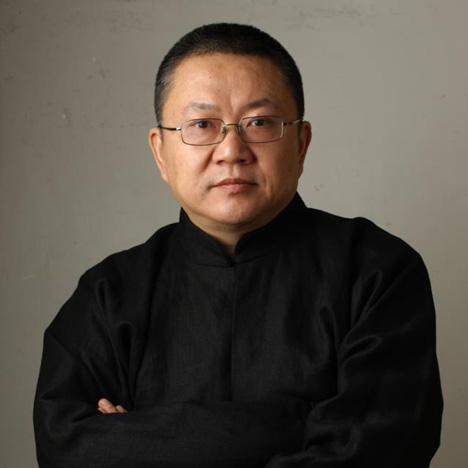
Wang Shu wins Pritzker Prize 2012
Dezeen Wire: Chinese architect Wang Shu of Amateur Architecture Studio in Hangzhou is the 2012 Pritkzer Prize laureate. The prize organisers have confirmed the news after details were leaked ahead of schedule.
Last year's winner was Portuguese architect Eduardo Souto de Moura - read more stories about the Pritzker Prize here.
Here's the full jury citation:
Jury Citation 2012
The architecture of the 2012 Pritzker Prize Laureate Wang Shu, opens new horizons while at the same time resonates with place and memory. His buildings have the unique ability to evoke the past, without making direct references to history. Born in 1963 and educated in China, Wang Shu’s architecture is exemplary in its strong sense of cultural continuity and re-invigorated tradition. In works undertaken by the office he founded with his partner and wife Lu Wenyu, Amateur Architecture Studio, the past is literally given new life as the relationship between past and present is explored. The question of the proper relation of present to past is particularly timely, for the recent process of urbanization in China invites debate as to whether architecture should be anchored in tradition or should look only toward the future. As with any great architecture, Wang Shu´s work is able to transcend that debate, producing an architecture that is timeless, deeply rooted in its context and yet universal.
Wang Shu´s buildings have a very rare attribute–a commanding and even, at times, monumental presence, while functioning superbly and creating a calm environment for life and daily activities. The History Museum at Ningbo is one of those unique buildings that while striking in photos, is even more moving when experienced. The museum is an urban icon, a well-tuned repository for history and a setting where the visitor comes first. The richness of the spatial experience, both in the exterior and interior is remarkable. This building embodies strength, pragmatism and emotion.
Wang Shu knows how to embrace the challenges of construction and employ them to his advantage. His approach to building is both critical and experimental. Using recycled materials, he is able to send several messages on the careful use of resources and respect for tradition and context as well as give a frank appraisal of technology and the quality of construction today, particularly in China. Wang Shu’s works that use recycled building materials, such as roof tiles and bricks from dismantled walls, create rich textural and tactile collages. Working in collaboration with construction workers, the outcome sometimes has an element of unpredictability, which in his case, gives the buildings a freshness and spontaneity.
In spite of his age, young for an architect, he has shown his ability to work successfully at various scales. The Xiangshan Campus of China Academy of Arts in Hangzhou is like a small town, providing a setting for learning and living for students, professors and staff. The exterior and interior connections between buildings and private and public spaces provide a rich environment where an emphasis on livability prevails. He is also capable of creating buildings on an intimate scale, such as the small exhibition hall or pavilions inserted into the fabric of the historic center of Hangzhou. As in all great architecture, he does this with naturalness, making it look as if it were an effortless exercise.
He calls his office Amateur Architecture Studio, but the work is that of a virtuoso in full command of the instruments of architecture–form, scale, material, space and light. The 2012 Pritzker Architecture Prize is given to Wang Shu for the exceptional nature and quality of his executed work, and also for his ongoing commitment to pursuing an uncompromising, responsible architecture arising from a sense of specific culture and place.